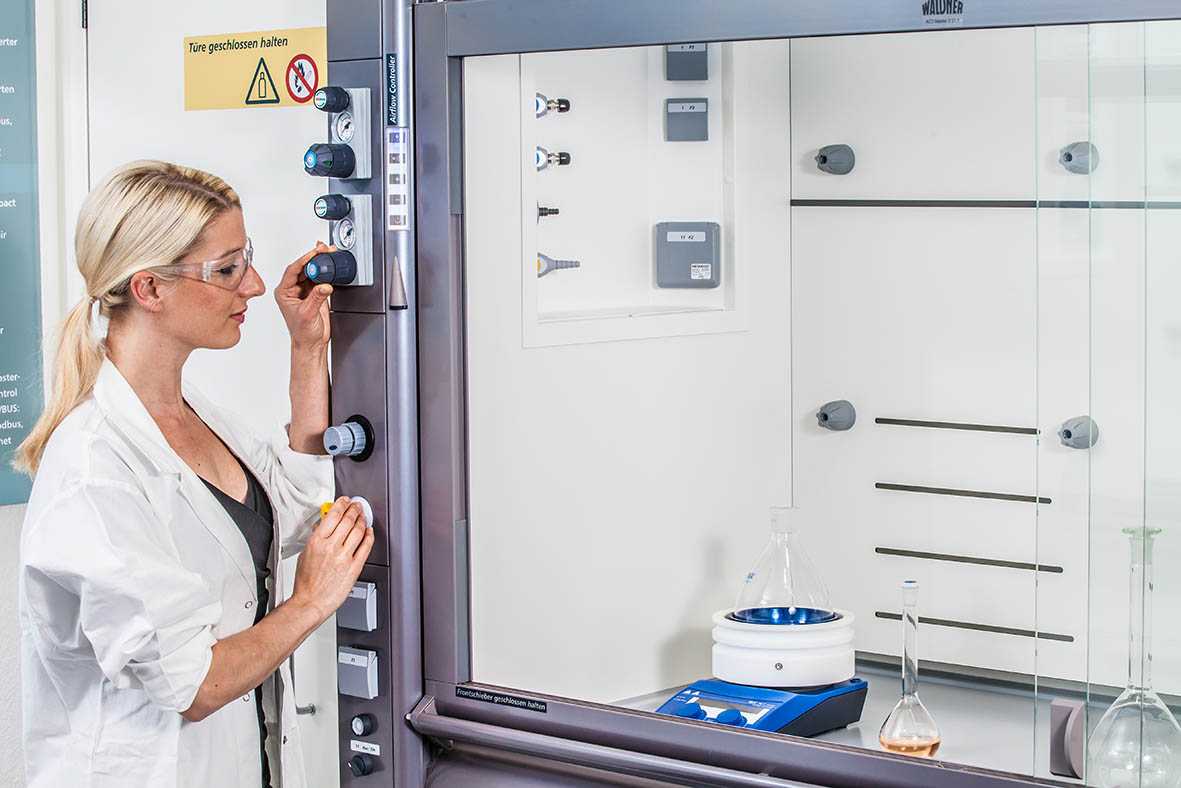Pressure Reducing Regulator versus Back Pressure Regulator
Published on 20 June 2016 byBoth regulate pressure; the only question to ask is where in a process line or application I would like to regulate the pressure? So, what is the real difference between the two, and when is it best to use one over the other.
When we speak of controlling, we actually mean regulating. It is a regulator after all...
A pressure reducing regulator (PRR) has a higher uncontrolled inlet pressure and a lower controlled outlet pressure. So, a PRR controls the pressure after the regulator, in the downstream process line. Think of a gas cylinder. When you are in a laboratory, there are “Point Of Use” regulators (in short called POUs) at the table/ furniture (see picture below). These supply the researchers with the gas they require. Outside of the room, often in the basement / warehouse of a building, there is a number of gas cylinders connected to the gas supply system of the room or building. The pressure in these cylinders, when completely filled, is normally around 200 bar. The gas supply system of the hospital cannot handle such pressures, so there are pressure reducing regulators (often part of changeover panels) in place to reduce the pressure to a constant 5-7 bar. Then there where the researcher needs his/ her gas, the pressure is regulated further down to what is required.
 Pressure reducing regulators are also often used after compressors or pumps to precisely control (regulate) the downstream pressure.
Pressure reducing regulators are also often used after compressors or pumps to precisely control (regulate) the downstream pressure.
A back pressure regulator (BPR) controls the pressure before the instrument itself. By doing this, it either protects the infrastructure before the regulator itself, or by using a PRR and BPR in one line, you put a certain part of a process line under a controlled pressure. This you would do when testing the strength of a tank for example, or when you wish to create a constant seal. When looking at the oil industry, there are these large floating production ships, called FPSO (Floating Production Storage Offloading). There are flexible hoses in place to pump water into the oil well to allow for more oil to stream out, or lines for oil to be brought to the surface. These flexible hoses need to stay connected to the vessel. To ensure this, seals are made around these pipes making this possible and keeping the lines secure. This is where you would use the two; a PRR and a BPR. Another good example for a BPR is for controlling the by-pass for a Positive Displacement pump (PD-pump).
A BPR is not a relief valve. It is not there to blow off excess pressure; it opens up just enough to stabilize the pressure to the desired level before the regulator. It is much more stable, reliable and protects your installation.
Most regulators in use are Pressure Reducing Regulators, as their application is far more common. In case you have doubts which to use or where to place it in your system, please feel free to contact us via: regulator@gcegroup.com.
Please, do not try to use a valve to perform the functions of a regulator. It may save you money on the initial purchase, though in the end you will be paying a lot more. Their performance does not match that of a regulator. Also for this, and other gas control questions, you can contact us via the above email address.
Arjan van Ginkel
Product Manager druvaO&G
Druva is part of the GCE Group

